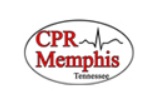What is Williams Syndrome by Christina Steger
Call Us Now
Get the Best CPR Class in Memphis Today!
Williams Syndrome (also known as Williams-Beuren Syndrome) is a rare genetic disorder that affects about one in 7,500-20,000 individuals. It is known as an autosomal dominant condition in which there is a deletion of genetic material from a specific region of chromosome 7. Those affected by Williams Syndrome are known to generally have distinct facial characteristics, mild to moderate learning disabilities, and heart/blood vessel problems.
Some of the distinctive facial features apparent in those with Williams Syndrome are round faces, large mouths, fuller cheeks, broad nasal bridges, smaller mandibles, and prominent ears. They can also have widely spaced teeth and epicanthal folds on the inner corner of the eyes. Some of these features become more pronounced with age. Individuals with this disease are usually shorter in stature compared with other family members.
It is very common (roughly 75% of the time) that a person with Williams Syndrome has some type of intellectual disability. This can include learning disorders, difficulty with visual-spatial tasks, delayed speech, and even varying degrees of mental retardation. Many with this condition also have anxiety issues and commonly have ADD (Attention Deficit Disorder) and certain types of phobias. On a more positive note, people with Williams Syndrome are typically very outgoing and friendly, and can have very magnetic personalities. They tend to excel more in activities that involve spoken language, music, and interactions with other people in general.
Perhaps the most threatening characteristic of those affected with Williams Syndrome is the affiliation of the disorder with certain cardiac defects. Frequently, people with this condition have a form of cardiovascular disease called supravalvular aortic stenosis (SVAS). This is a very serious condition in which there is a narrowing of the large blood vessel called the aorta. Because the aorta delivers blood from the heart to the rest of the body, a narrowing of this vessel can lead to shortness of breath, chest pain, and eventually heart failure if left untreated. This can also lead to hypertension (high blood pressure) and joint and muscle stiffness. Pulmonary stenosis is also common in those with Williams Syndrome. This could be a contributing factor to tightening of the chest and possible breathing complications.
There is no known cure for Williams Syndrome. Since a high blood calcium level (hypercalcemia) is prevalent in those with this condition, most are warned to refrain from taking extra calcium and Vitamin D into their diet. The narrowing of the blood vessels is treated individually and based upon severity. Physical therapy can also be very beneficial to those who suffer with joint and muscle stiffness. Treatment options for other symptoms usually involve some type of speech or developmental therapy.
Call Us Now
Get the Best CPR Class in Memphis Today!
Most patients with Williams Syndrome have a shorter life expectancy, mainly due to complications involved with the disease. Whether the individual needs a 24 hour caregiver or even lives in a group home setting with constant supervision, a high quality of life can still be anticipated.
REFERENCES
WebMD. Retrieved October 6, 2013 from http://children.webmd.com/williams-syndrome-11011
National Institute of Health. Retrieved October 6, 2013 from http://ghr.nlm.nih.gov/condition/williams-syndrome
MedlinePlus via NIH. Retrieved October 6, 2013. http://www.nlm.nih.gov/medlineplus/ency/article/001116.htm









